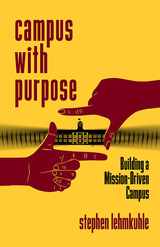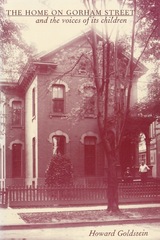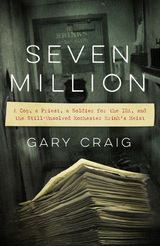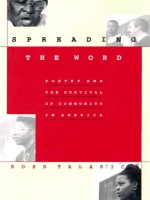5 books about Rochester

Campus with Purpose
Building a Mission-Driven Campus
Stephen Lehmkuhle
Rutgers University Press, 2021
When Stephen Lehmkuhle became the chancellor of the brand-new University of Minnesota-Rochester campus, he had to start from scratch. He did not inherit a legacy mission that established what the campus did and how to do it; rather, he needed to find a way to rationalize the existence of the nascent campus. Lehmkuhle recognized that without a shared understanding of purpose, the scope of a new campus expands at an unsustainable rate as it tries to be all things to all people, and so his first act was to decide on the driving purpose of the campus. He then used this purpose to make decisions about institutional design, scope, programs, and campus activities. Through personal and engaging anecdotes about his experience, Lehmkuhle describes how higher education leaders can focus on campus purpose to create new and fresh ways to think about many elements of campus operation and function, and how leaders can protect the campus’s purpose from the pervasive higher education culture that is hardened by history and habit.
[more]

French Daguerreotypes
Janet E. Buerger
University of Chicago Press, 1989
Upon its introduction in 1839, the daguerreotype was hailed as a magical reflection of reality. Today, these early examples of the first practical photographic process offer fascinating windows into the past. The daguerreotypes collected here not only document the birth of photography and its aesthetic and historical legacy but also provide insight into French art and culture.
Lavishly illustrated, this volume is the first complete catalog of the French daguerreotype collection of the International Museum of Photography at George Eastman House. Janet E. Buerger uses this remarkable collection of images to produce a cultural history of the daguerreotype's most learned following—an elite group of mid-nineteenth-century intellectuals who sought to understand and develop the usefulness, potential, and beauty of this camera image. This varied group, including entrepreneurs, painters, scientists, and historians, enables Buerger to trace the influence of photography into virtually every area of nineteenth-century European intellectual life.
Lavishly illustrated, this volume is the first complete catalog of the French daguerreotype collection of the International Museum of Photography at George Eastman House. Janet E. Buerger uses this remarkable collection of images to produce a cultural history of the daguerreotype's most learned following—an elite group of mid-nineteenth-century intellectuals who sought to understand and develop the usefulness, potential, and beauty of this camera image. This varied group, including entrepreneurs, painters, scientists, and historians, enables Buerger to trace the influence of photography into virtually every area of nineteenth-century European intellectual life.
[more]

The Home on Gorham Street and the Voices of Its Children
Howard Goldstein
University of Alabama Press, 1996
The Home on Gorham Street looks back to an earlier era of care for orphaned and dependent children of Eastern European Jewish immigrants. Within this social history and ethnography, the voices of elders once wards of the home in the 1930s and 1940s tell us in sometimes poetic, often comic, usually ironic, and always poignant words what it was really like to grow up in an orphanage. Emerging from this penetrating adventure are principles for the future of effective group care in meeting
the needs of the rapidly growing number of abused, forsaken, and orphaned children.
Goldstein's ethnography demonstrates amply that children who spend years in an institution can go on to lead productive lives under certain conditions. Such conditions may never have been met in any other children's institution. That they did exist one time, however, is cause not only to rejoice but also to understand that recreating these conditions is difficult and possibly impossible.
the needs of the rapidly growing number of abused, forsaken, and orphaned children.
Goldstein's ethnography demonstrates amply that children who spend years in an institution can go on to lead productive lives under certain conditions. Such conditions may never have been met in any other children's institution. That they did exist one time, however, is cause not only to rejoice but also to understand that recreating these conditions is difficult and possibly impossible.
[more]

Seven Million
A Cop, a Priest, a Soldier for the IRA, and the Still-Unsolved Rochester Brink's Heist
Gary Craig
University Press of New England, 2017
On a freezing night in January 1993, masked gunmen walked through the laughably lax security at the Rochester Brink’s depot, tied up the guards, and unhurriedly made off with $7.4 million in one of the FBI’s top-five armored car heists in history. Suspicion quickly fell on a retired Rochester cop working security for Brinks at the time—as well it might. Officer Tom O’Connor had been previously suspected of everything from robbery to murder to complicity with the IRA. One ex-IRA soldier in particular was indebted to O’Connor for smuggling him and his girlfriend into the United States, and when he was caught in New York City with $2 million in cash from the Brink’s heist, prosecutors were certain they finally had enough to nail O’Connor. But they were wrong. In Seven Million, the reporter Gary Craig meticulously unwinds the long skein of leads, half-truths, false starts, and dead ends, taking us from the grim solitary pens of Northern Ireland’s Long Kesh prison to the illegal poker rooms of Manhattan to the cold lakeshore on the Canadian border where the body parts began washing up. The story is populated by a colorful cast of characters, including cops and FBI agents, prison snitches, a radical priest of the Melkite order who ran a home for troubled teenagers on the Lower East Side of Manhattan, and the IRA rebel who’d spent long years jailed in one of Northern Ireland’s most brutal prisons and who was living underground in New York posing as a comics dealer. Finally, Craig investigates the strange, sad fate of Ronnie Gibbons, a down-and-out boxer and muscle-for-hire in illegal New York City card rooms, who was in on the early planning of the heist, and who disappeared one day in 1995 after an ill-advised trip to Rochester to see some men about getting what he felt he was owed. Instead, he got was what was coming to him. Seven Million is a meticulous re-creation of a complicated heist executed by a variegated and unsavory crew, and of its many repercussions. Some of the suspects are now dead, some went to jail; none of them are talking about the robbery or what really happened to Ronnie Gibbons. And the money? Only a fraction was recovered, meaning that most of the $7 million is still out there somewhere.
[more]

Spreading the Word
Poetry and the Survival of Community in America
Ross Talarico
Duke University Press, 1995
In 1985 poet Ross Talarico began a grassroots program in creative expression in Rochester, New York. As the program came together, so did the community—young and old, poor and privileged, even those who could not read or write but wanted to tell their stories. This book is a testimony to the poetry that experience produced. An exhilarating account of a successful experiment in promoting community self-expression, Spreading the Word interweaves the participants’ stories with Talarico’s own life, his struggle as a poet, and the drama of his workshops. The book will be both a resource and an inspiration for teachers of writing, writers, and those who simply wish to learn to write.
Drawing on his workshops in Rochester, Talarico describes a unique approach for eliciting poetry from people of many ages and backgrounds—particularly underpriviledged urban kids and the elderly. The process—from dialogue to self-expression to publication to public event—illuminates the urgency and meaning of releasing the spirit captured in each man and woman and child’s experience. "Some people say that Ross Talarico has done the impossible," the Today Show remarked of his success in Rochester; and with this book Talarico offers the same opportunity to others. Teachers, community leaders, parents, and children will be able to follow his practical, hands-on approach to encouraging self-expression in diverse, even unlikely, settings. They will see here how poetry is indeed relevant, ever more crucial to our identity as the culture evolves—how it is, finally, the place where the inarticulate can come to speak for themselves.
Drawing on his workshops in Rochester, Talarico describes a unique approach for eliciting poetry from people of many ages and backgrounds—particularly underpriviledged urban kids and the elderly. The process—from dialogue to self-expression to publication to public event—illuminates the urgency and meaning of releasing the spirit captured in each man and woman and child’s experience. "Some people say that Ross Talarico has done the impossible," the Today Show remarked of his success in Rochester; and with this book Talarico offers the same opportunity to others. Teachers, community leaders, parents, and children will be able to follow his practical, hands-on approach to encouraging self-expression in diverse, even unlikely, settings. They will see here how poetry is indeed relevant, ever more crucial to our identity as the culture evolves—how it is, finally, the place where the inarticulate can come to speak for themselves.
[more]
READERS
Browse our collection.
PUBLISHERS
See BiblioVault's publisher services.
STUDENT SERVICES
Files for college accessibility offices.
UChicago Accessibility Resources
home | accessibility | search | about | contact us
BiblioVault ® 2001 - 2024
The University of Chicago Press









